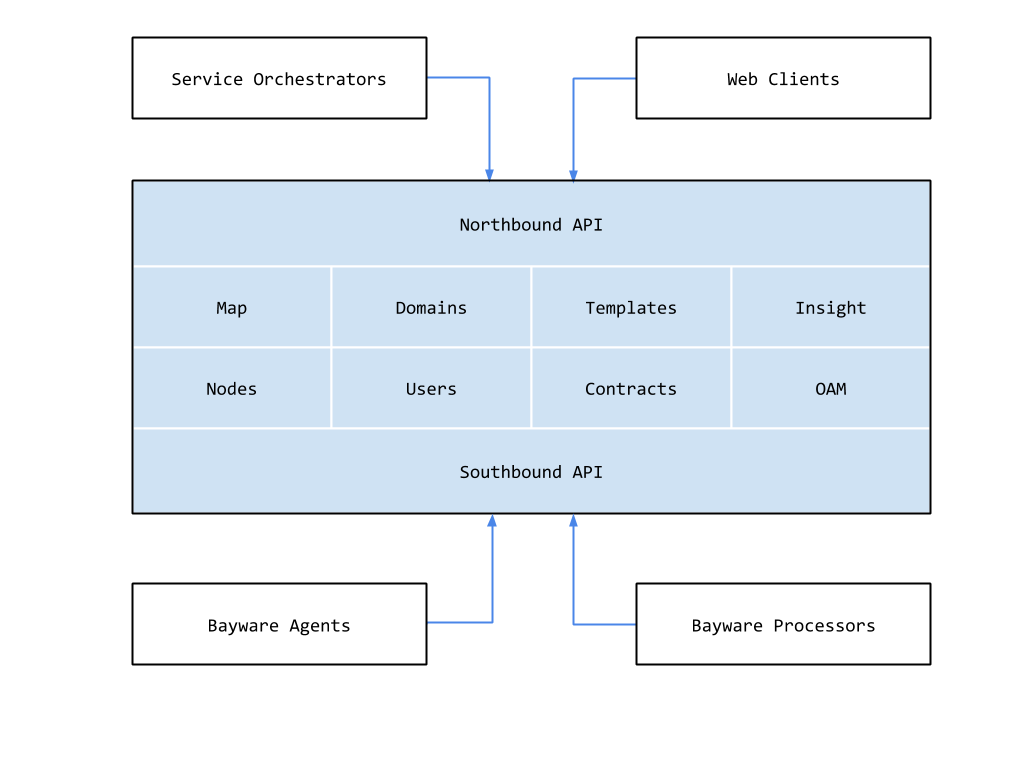Controller¶
Bayware’s distributed Controller means that services like micro-segmentation, multicast, load balancing, and content distribution are available to VMs and containers for immediate download just like mobile apps for smartphones. Simple software programming gives end users the power to create microprograms so that their applications carry custom communication services.
The Controller is a unified point for deployment of new network services (i.e. microprograms) and for management of network policy. The Controller’s RESTful northbound API allows workload management systems to manage all the workload networking: isolation groups, network attachment, role-based data exchange. Every workload gets authenticated in the Controller database or enterprise’s LDAP directory before even being attached to the Bayware fabric.
Data center operators receive a full visibility of their Bayware fabrics from the Controller. They can drill from a link or node status down to attributes of a given flow that currently traverses the network. The Controller keeps the network graph always updated so that external systems (AI-based?) can perform usage pattern analisys, load optimization, security audit, problem localization and isolation.
The Controller is implemented as a two-tier platform where the upper layer is responsible for a northbound interface to workload management systems while the lower layer provides a southbound interface to network nodes. The lower layer scales horizontally so that a given set of workload instances can be served by a dedicated cluster of Controllers. It helps optimize performance and reduce risks of network service interruption.
